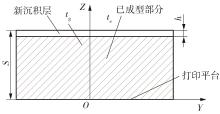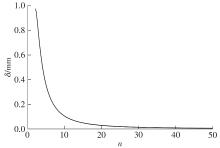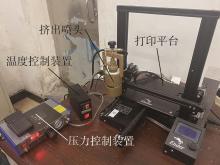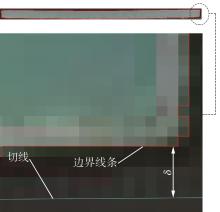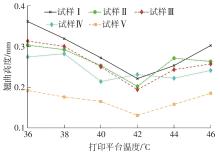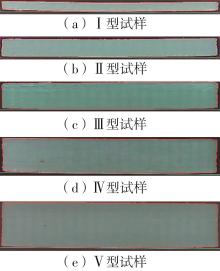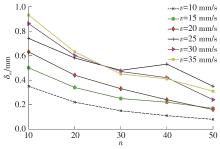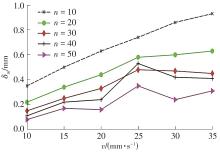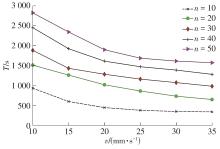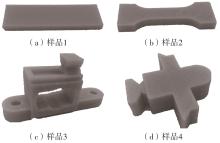| 1 |
TIM F, STEFANIE K, MARKUS T .Characterisation of fused deposition modeling 3D printers for pharmaceutical and medical applications[J].Pharmaceutical Development and Technology,2018,23(10):1-33.
|
| 2 |
MELOCCHI A, PARIETTI F, MARONI A,et al .Hotmelt extruded filaments based on pharmaceutical grade polymers for 3D printing by fused deposition modeling[J].International Journal of Pharmaceutics,2016,509(1/2):255-263.
|
| 3 |
BULANDA K, OLEKSY M, OLIWA R,et al .Biodegradable polymer composites used in rapid prototyping technology by melt extrusion polymers[J].Polimery,2020,65(6):430-436.
|
| 4 |
CHOE C M, SOK S H, RI W S,et al .Manufacture of plaster core mold for large oxygen plant components using fused deposition modeling (FDM)[J].International Journal of Metalcasting,2021,15(4):1-7.
|
| 5 |
练健 .熔模铸造用蜡模3D打印工艺研究[D].南京:南京理工大学,2021.
|
| 6 |
闫存富,乔雪涛,郭晓红,等 .基于熔融沉积成型3D打印翘曲变形的工艺参数优化[J].工程塑料应用,2021,49(12):77-80.
|
|
YAN Cunfu, QIAO Xuetao, GUO Xiaohong,et al .Optimization of process parameters based on warpage deformation of 3D printing based on fused deposition molding[J].Engineering Plastics Application,2021,49(12):77-80.
|
| 7 |
吴彦之,侯和平,徐卓飞,等 .熔融沉积成型喷头系统的研究进展[J].中国塑料,2019,33(9):116-124.
|
|
WU Yanzhi, HOU Heping, XU Zhuofei,et al .Research progress of fused deposition molding nozzle system[J].China Plastics,2019,33(9):116-124.
|
| 8 |
CHOHAN J S, SINGH R, BOPARAI K S,et al .Dimensional accuracy analysis of coupled fused deposition modeling and vapour smoothing operations for biomedical applications[J].Composites Part B:Engineering,2017,117:138-149.
|
| 9 |
SINGH K .Experimental study to prevent the warping of 3D models in fused deposition modeling[J].International Journal of Plastics Technology,2018,22(1):177-184.
|
| 10 |
余瑾,杨冰倩,杨国法,等 .熔模铸造石蜡-地蜡系中温模料配方优化研究[J].铸造技术,2015,36(9):2315-2317.
|
|
YU Jin, YANG Bingqian, YANG Guofa,et al .Study on formulation optimization of medium temperature mold for investment casting paraffin-ozokerite[J].Foundry Technology,2015,36(9):2315-2317.
|
| 11 |
MUSLIM M, ESSAM S, HAZRAT A M .Process parameter optimization for 3D printed investment casting wax pattern and its post-processing technique[J].Applied Sciences,2022,12(14):6847.
|
| 12 |
莫海军,王顺栋,梁道明 .直写铸造蜡沉积成型数值模拟分析与实验[J].机床与液压,2022,50(23):61-69.
|
|
MO Haijun, WANG Shundong, LIANG Daoming .Numerical simulation analysis and experiment of direct writing casting wax deposition molding[J].Machine Tool & Hydraulics,2022,50(23):61-69.
|
| 13 |
BOSCHETTO A, BOTTINI L .Triangular mesh offset aiming to enhance fused deposition modeling accuracy[J].The International Journal of Advanced Manufacturing Technology,2015,80(1/2/3/4):99-111.
|
| 14 |
ANDI W, SUOYUAN S, QIANG H,et al .In-plane shape-deviation modeling and compensation for fused deposition modeling processes[J].IEEE Transactions on Automation Science and Engineering,2017,14(2):968-976.
|
| 15 |
GAO R X, XIE J, YANG J H,et al .Research on the fused deposition modeling of polyether ether ketone[J].Polymers,2021,13(14):2344.
|
| 16 |
桑鹏飞,刘凯,王扬威 .熔融沉积成型中的原型翘曲变形分析[J].机械设计与研究,2015,31(3):118-120,124.
|
|
SANG Pengfei, LIU Kai, WANG Yangwei .Warpage deformation analysis of prototypes in fused deposition molding[J].Mechanical Design and Research,2015,31(3):118-120,124.
|
| 17 |
ARMILLOTTA A, CAVALLARO M .Edge quality in fused deposition modeling:I. Definition and analysis[J].Rapid Prototyping Journal,2017,23(6):1079-1087.
|
| 18 |
TAUFIK M, JAIN K P .A study of build edge profile for prediction of surface roughness in fused deposition modeling[J].Journal of Manufacturing Science and Engineering,2016,138(6):1115-1125.
|
| 19 |
莫海军,梁道明,林晨彬 .基于气压驱动的蜡模3D打印成形精度研究[J].特种铸造及有色合金,2023,43(2):185-190.
|
|
MO Haijun, LIANG Daoming, LIN Chenbin .Research on the precision of wax pattern 3D printing based on air pressure drive[J].Special Casting and Nonferrous Alloys,2023,43(2):185-190.
|
| 20 |
王顺栋 .铸造蜡气动挤出直写成型的关键技术与实验研究[D].广州:华南理工大学,2022.
|
| 21 |
陈松茂,陈宇林 .填充速度对制件拐角轮廓部位熔融沉积精度与打印效率的影响[J].华南理工大学学报(自然科学版),2021,49(6):1-8.
|
|
CHEN Songmao, CHEN Yulin .Effect of filling speed on fused deposition accuracy and printing efficiency at corner contour of parts[J].Journal of South China University of Technology (Natural Science Edition),2021,49(6):1-8.
|
 ), LIANG Daoming, LIN Chenbin, LIU Xiang
), LIANG Daoming, LIN Chenbin, LIU Xiang
